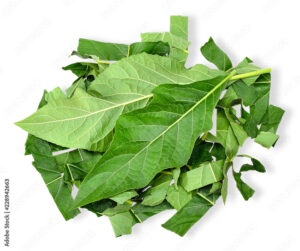Vasa represent a class of herbal drug with very strong conceptual or traditional base as well as a strong experimental base for its use.

Botanical Name – Adhathoda vasica
Family Name — Acantaceae
Common Name —
- English – Malabar nut; Vasaka
- Kannada – Adusoage
- Marathi – Adulsa
- Hindi – Adulsa
The Therapeutic conditions —
- Cough (with yellow thick sputum and fever)
- Chronic cough due to Tuberculosis along with anti-tubercular medicines
- Asthma (wheezing, breathing trouble and chest congestion)
- Upper respiratory infections (with a fever and productive cough)
- Common cold (with thick yellow discharge or along with secondary bacterial infection)
- Chronic Bronchitis
- Sinusitis
- Sore throat
- Throat pain
- Throat Irritation
- Tonsillitis (swelling or inflammation of tonsils with redness)
- Throat ulcers
- Excessive thirst
- Nosebleed (epistaxis) – due to excess heat
- Angina pectoris
- Heart diseases (including high blood pressure)
- Mild constipation
- Dengue fever
How to consume the herb –-
- Leaf Juice – 10 -20ml
- Root decoction – 40 –80ml
- Flower Juice – 10 –20ml
- Leaf dry powder – 1 –3 grams, once or twice a day.
- Putapaka Swarasa – 24 – 48ml, once or twice a day
The medicines which have Vasa as their ingredients –
- Vasavaleha
- Vasa Ghrita
Some Formulations to use —
Cough
In ayurvedic Medicine, Adhatoda Vasica is used when patient coughing up yellow thick sputum and has a fever, wheezing or difficulty in coughing up the sputum. Then the following herbal combination is given.
- Vasa Churna — 2 grams
- Sitopaladi churna — 2 grams
- Honey — 1 teaspoon
Asthma
In Ayurveda, the following herbal combination is helpful for asthma.
- Fresh Vasa leaves juice — 5ml
- Fresh Ginger juice — 2.5ml
- Honey — 1 teaspoon
Upper Respiratory Infections
The following formulation is also helpful in the management of upper respiratory infections. This works when the patient has yellow thick sputum, cough, fever, nasal congestion, wheezing etc.
- The Churna — 1 grams
- Sitopaladi Churna — 2 grams
- Mahasudarshan Churna — 2 grams
- Tulsi churna — 1gram
- Honey — 1 teaspoon
Common Cold
Ayurvedic doctors use it in the common cold when nasal discharge is yellow and thick
- Churna — 1 gram
- Sitopaladi churna — 1 gram
- Punarnava churna — 1 gram
- Trikatu churna — 125mg
- Honey — 1 teaspoon
Peptic and Duodenal Ulcer
According to Ayurveda, it is beneficial in bleeding disorders and ulceration. Furthermore, it can help in peptic and duodenal ulcer. The following combination is used for this purpose.
- Churna — 1 gram
- Yashtimadhu — 1 gram
- Shatavari churna — 500mg
- Vansalochan — 500mg
- Mishri — 1 gram
Excessive Uterine Bleeding
10 ml Vasaka juice or 50 ml Vasaka decoction along with 10 grams Misri powder is beneficial for treating excessive uterine bleeding. The treatment duration with this remedy should be continued at least for 4 to 6 weeks
Side effects
There are no side effects observed with Adhatoda Vasica or Vasaka when it is used in a natural form including leaf powder, leaf juice, decoction etc
Pregnancy & Lactation
In Ayurveda, Adhatoda Vasica is used during pregnancy to reduce symptoms of nausea, vomiting, acidity along with ginger. Therefore, it might be safe during pregnancy and breastfeeding for short-term use. The long-term use should be discouraged.
Hello!!
I’m Dr. Malini Bhat MD (Ayu); an Ayurvedic Doctor and a health blogger. Follow me on social media to get daily health tips which you can easily adapt to a healthy lifestyle.